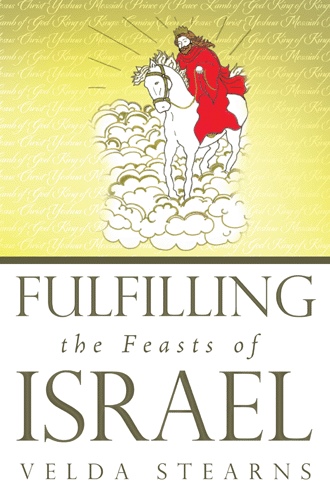Fulfilling the Feasts of Israel
Welcome to this comprehensive study about the seven appointed feasts, certain to bring deeper scriptural revelation to you as a believer. For it is through these seven portals, which God Himself refers to in Leviticus as “My feasts,” that we can glimpse His divine plan for the ages.
The seven biblical feasts that God commanded Moses and the children of Israel to celebrate help unlock the entire Bible. The 23rd chapter of Leviticus gives complete details of these seven feasts. God dictated the dates and proper observance of these days to Moses while he was on Mount Sinai.
The Jews have kept these holidays in one form or another for over 3500 years, helping to guide and sustain them throughout history. But as they continue to celebrate, most are totally unaware that these feasts point to their Messiah.
Each feast celebrated a special event in the history of Israel. They celebrated an event or special happening in the history of Israel. Each feast revealed a prophetic picture of the future that pointed to Yeshua, the coming Messiah.
The feasts are rehearsals of events that will occur in the future. Rehearsals are typically followed by the actual event. For example, when you rehearse a wedding, the wedding follows. Each feast is a rehearsal of an event that only the Messiah can fulfill. Many Jewish people celebrate these feasts every year, unaware that they are rehearsing future events.
Passover recalls the Israelites’ redemption from slavery. It is the first and best known Jewish feast that is celebrated in the spring of the year in the month of Nisan. It usually falls between mid–March to mid–April. Passover was a joyous time for all Israel. Festive pilgrims traveled to Jerusalem from all parts of the land and from foreign countries singing the Psalms, and bringing with them burnt and peace offerings, according as the Lord has blessed them. Christ, the Passover Lamb fulfilled Passover by His death on the cross.
The Feast of Unleavened Bread occurs simultaneously with Passover. It actually begins on the evening of Passover at sunset on the fifteenth of Nisan. According to Jewish custom, the sitting of the sun represents a new day. Since these two feasts are so closely related, they are often thought of as one feast.
Unleavened bread (matzah) is symbolic of sin and looks much like a cracker. It was pierced with holes and marked with stripes. It was eaten for seven day with bitter herbs to remind them of the bitterness of slavery. Historically, it points to their deliverance from Egyptian bondage. Christ fulfilled this feast by His burial.
The Feast of Firstfruits is related directly to the Feast of Passover and Unleavened Bread. It falls on Sunday, the day after the Sabbath. The term firstfruits refer to the first portion of the harvest that was dedicated to God. The Jewish people brought firstfruits of the harvest to the priests who offered them to the Lord.
Christ was resurrected from the dead on this day. “But now Christ has been raised from the dead, the first fruits of those who are asleep.” (1 Corinthians 15:20)
The Feast of Weeks is a festive late spring Jewish holiday. It is known as Shavuot in Hebrew, meaning weeks. It refers to the festival which occurs seven weeks, or fifty days, after the Passover season. God did not specify a date to celebrate this feast. The counting begins on the 17th of Nisan, the second night of Passover. Fifty days are counted between Passover and the Feast of Weeks. It is celebrated at the time of the wheat harvest on the 6th and 7th day of Sivan, which is May to June in the secular calendar.
Unlike Passover, this feast had no memorial significance. The rabbis ascribed the giving of the law to Moses and consider this to be the birthday of Judaism. Christ fulfilled Shavuot when the Holy Spirit was poured out on the early church on the Day of Pentecost.
The Old Testament paints a beautiful picture of the Messiah. The spring feasts prophetically point to His first coming as suffering Savior. The accuracy in which Jesus fulfilled the Spring Feasts at His first appearance is undeniable! They graphically describe His first coming; His death, burial and resurrection. He was sacrificed on Passover, buried on Unleavened Bread, and resurrected on First Fruits. He sent the Holy Spirit on Pentecost.
The three fall feasts, Rosh Hashanah, Yom Kippur, and Sukkot occur in Tishri, in the fall of the year, usually between September and October. Rosh Hashanah (Feast of Trumpets) points to the soon return of Yeshua, the Jewish Messiah. The sound of the trumpet is clearly associated with Christ’s return.
The final Day of Atonement portrays the future conversion of Israel as a nation. It points to a time when they will accept Yeshua, their long awaited Messiah, and turn to God in repentance. Deliverance and salvation will come to the nation of Israel. They will look to Him and be saved. Their sins will be forgiven, not just atoned for. Israel will be delivered from all their enemies and saved as a nation.
When the Jewish Messiah returns to earth, He will establish His throne in Jerusalem and be king over all the earth. The King of kings will rule and reign from Jerusalem and tabernacle with His people.
The Jewish Feasts point to Christ as Lord of time and Lord of eternity. Christ has already fulfilled the spring feasts and will fulfill the fall festivals at His Second Coming. Each feast shows a prophetic picture that only the Messiah can fulfill.
Fulfilling the Feasts of Israel will help you understand the real meaning of each feast. I pray you will understand the simplicity of God’s divine seven-thousand-year plan of salvation revealed through the Seven Feasts of Israel.


